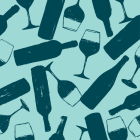La Tache 1990 helps push HDH sale well over high estimates
US auction house Hart Davies Hart has gotten 2019 off to a flying start as its first sale of the year made $8m – nearly $1m over its pre-sale high estimate.
The two-day sale featured wines from the cellar of noted collector David Utterberg, and saw more than 1,000 bidders from around the world push 60% of the lots over their pre-sale high estimates.
There was strong bidding for Domaine de la Romanee-Conti, Domaine Ponsot, Henri Jayer and Meo-Camuzet, while the sale’s other collection from Johnson Ho & The Pantheon Wine Shoppe focused more on claret, with cases of Petrus and Cheval Blanc capturing bidders’ attention.
The sale’s top lot was a 12 bottle case of 1990 La Tache which went for $101,575, followed closely by a dozen of Domaine Ponsot’s 1985 Clos de la Roche at $95,600.
Bidders show growing interest in natural wines
Fine wine buyers are showing increasing interest in natural and low intervention wines, according to online auctioneer iDealwine.
While the platform first noticed a burgeoning trend back in 2017, auctions in mid-January of this year revealed strong activity around labels from Jura, the Loire, Rhone and Burgundy, which are all known for their role in the low-intervention movement.
Jacques Overnoy wines – one of the Jura’s best-known ‘cult’ producers – has seen gains of over 50%, for example. Jean Francois Ganevat, meanwhile, now routinely sells older vintages of its ‘Les Vingnes de mon Pere’ for more than €400 a bottle, when they sold for €150 just two years ago.
The white Saumur wines of Antoine Foucault, son of Charly Foucault of Clos Rougeard, are also on the up, with the 2012 vintage seeing increases of 40% in recent sales.
As The Drinks Business reports, even established regions such as Bugundy “are not immune”, with buyers “increasingly latching on to other names such as Frederic Cossard and Philippe Pacalet, whose wines are seeing steep upward price trajectories at auction”.
South America overtakes Italy in UK’s value rankings
Italy has slipped to third place in the UK’s wine value rankings, with Chile and Argentina combining to push South America into the second spot.
According to Nielsen sales figures, value sales for Chile (+4.1%) and Argentina (+11.2%) create a combined market share of 12.6%, a hair’s breadth ahead of Italy at 12.5%.
Australia continues to sit at the top of the table, leading the way in the UK’s shops and supermarkets with 21.2% share of still wine trade.
Simon Doyle, UK general manager of Latin American wine producer Concha y Toro, told Harpers: “Three years ago, we highlighted South America’s rapid progress up the table of the most popular wine origins, when it first overtook South Africa and then Spain when treated as a single region.
“It is impressive to see this upward trend persist, as shoppers continue to discover and enjoy the diverse range of wines from South America.”
The Nielsen data also reveals that Malbec continues to be UK shoppers’ grape of choice in terms of market share, which is up 20.1% on last year, positioned only behind Shiraz and Merlot.
UK oenophiles turn attention to Portuguese wines
The UK is developing quite an appetite for Portuguese wines, new figures suggest. According to Wines of Portugal, Portuguese DO wines in the UK have increased 34% by volume in the past year.
This makes the UK the sixth biggest importer globally for Portuguese wine – third largest if fortified wines are included.
Sonia Vieira, marketing director of ViniPortugal, commented: “The continued rise of Portuguese wine imports to the UK demonstrates their relevance across the trade, allowing buyers to meet the needs of the increasingly discerning customer, whilst remaining profitable.
“We remain committed to building recognition for these wines across the UK and confident that we can continue to drive the UK consumer’s enthusiasm for Portuguese wines.”
First Champagne aged in gold will go on sale in 2021
Champagne Leclerc Briant will release the world’s first fizz fermented and aged in gold in 2021.
The specially-made barrel will hold 228 litres of wine from the 2016 harvest and is made of stainless steel lined with 24-carat gold, which has been applied using electrolysis.
Speaking to The Drinks Business, head winemaker Herve Jestin said the barrel was “very expensive”, but had been chosen due to gold’s unique solar properties. Jestin believes there is “a resonance between solar energy and the wine”, and claims that the use of gold will “increase the level of solar activity during the first fermentation”.
Jestin has patented the barrel and says that while he can’t explain the effect the barrel has on wine, he believes it to be highly effective. “People might think that such experimentation is stupid, but by chance we have a crazy idea that appears to be making a powerful improvement to the process,” he said.






